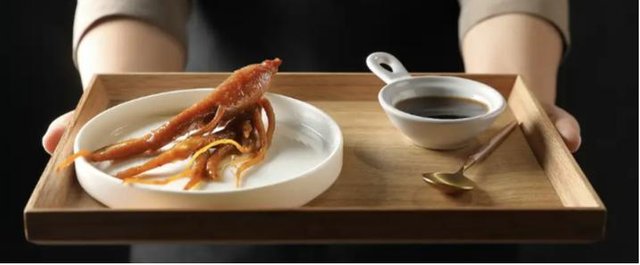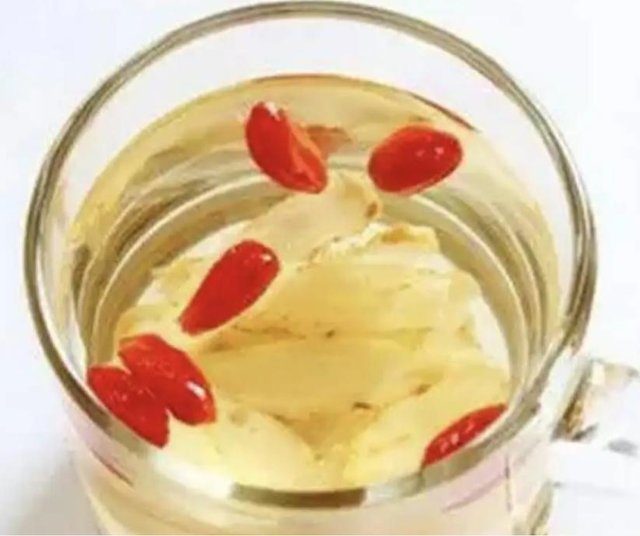How to eat ginseng in Northeast China

How should you taste fresh ginseng after receiving it? Don't worry, the fresh ginseng eating strategy will be presented immediately!
Slice and take
Wash the fresh ginseng thoroughly, cut it into 2~3mm thick slices on the cutting board, put it directly in the mouth, and chew and swallow it when the ginseng flavor becomes lighter. This is not only the easiest way to eat fresh ginseng, but also a good way to quickly refresh the mind and activate the working state. According to historical records, the Empress Dowager Cixi of the Qing Dynasty insisted on purifying ginseng every day for a penny.
Advantages: Quick to take, complete preservation of ginseng ingredients
Efficacy: Nourishes vitality and quickly restores energy
Tea
After slicing fresh ginseng, take 5~8 slices and put them in a cup, pour them into boiling water above 90 °C, cover the cup and soak for about 5 minutes before drinking, and you can also add red dates or wolfberries to soak together, the taste is better. After drinking ginseng tea, you can pour the ginseng slices into your mouth and chew them, which is nutritious and delicious without wasting~
Advantages: Easy to brew, rich ginseng aroma
Efficacy: Replenish qi and kidneys, enhance immunity
Soak honey
Prepare a sealable glass jar and a bottle of honey in advance. Take 2~3 fresh ginseng and cut it into thin slices, spread it evenly in the jar, pour in a little honey until it is just over the top of the ginseng slices, close the bottle and let it stand overnight. The next day, the nutritious and delicious ginseng tablets were ready! The sweet aroma of honey can neutralize the slight bitterness in fresh ginseng, and can moisten the lungs and remove phlegm and nourish the skin together with ginseng, which is very suitable for dry autumn and winter.
Advantages: Fresh and tender taste, sweet and delicious
Efficacy: Strengthen the stomach and eliminate food, moisten the lungs and nourish yin
Soaking wine
For those who like to drink, ginseng wine brewed with fresh ginseng has many benefits, as the saying goes, "if you can't drink it, you won't hurt your body if you get drunk". The practice of ginseng wine is also very simple, just wash and drain a whole root of fresh ginseng and place it in a glass container, add 1 kg of liquor with a purity between 50~60 °C and soak it for about 10 days. If necessary, you can add tonic herbs such as wolfberry, Ganoderma lucidum, Morinda officinalis, Cistanche, Eucommia ulmoides, etc., to further strengthen the health benefits of ginseng wine, but you should be careful not to drink too much alcohol.
Advantages: It has both ginseng aroma and wine taste, which is suitable for drinkers who pay attention to health preservation, and prolongs the storage time of fresh ginseng in disguise
Efficacy: Promote blood circulation and eliminate blood stasis, improve cardiovascular function
Stews
There are many kinds of ginseng stews, and the soup culture related to ginseng is even more profound and profound, here is the most convenient and least ingredient ginseng soup method - cut fresh ginseng into thin slices with a thickness of 2mm and put it in a ceramic bowl, fill it with water and seal the bowl, put the porcelain bowl in the stew pot and steam it for about 2 hours before drinking soup and ginseng, and those who like desserts can add 3-4 rock sugar to taste.
Advantages: Fully absorb the nutrients of fresh ginseng, suitable for sharing with family
Efficacy: Greatly replenish vitality, restore the pulse and solidify the body, nourish the heart and calm the nerves

Ginseng dryness is relatively high, resulting in many people eating ginseng and can not be eaten, it is recommended to eat ginseng when it is full of gas, ready to eat it out of the bag, subverting the traditional ginseng tonic form, patented ointment, a variety of herbs are carefully matched to remove the dryness of ginseng, to avoid all kinds of "fire" fever symptoms and adverse reactions in the eater.




